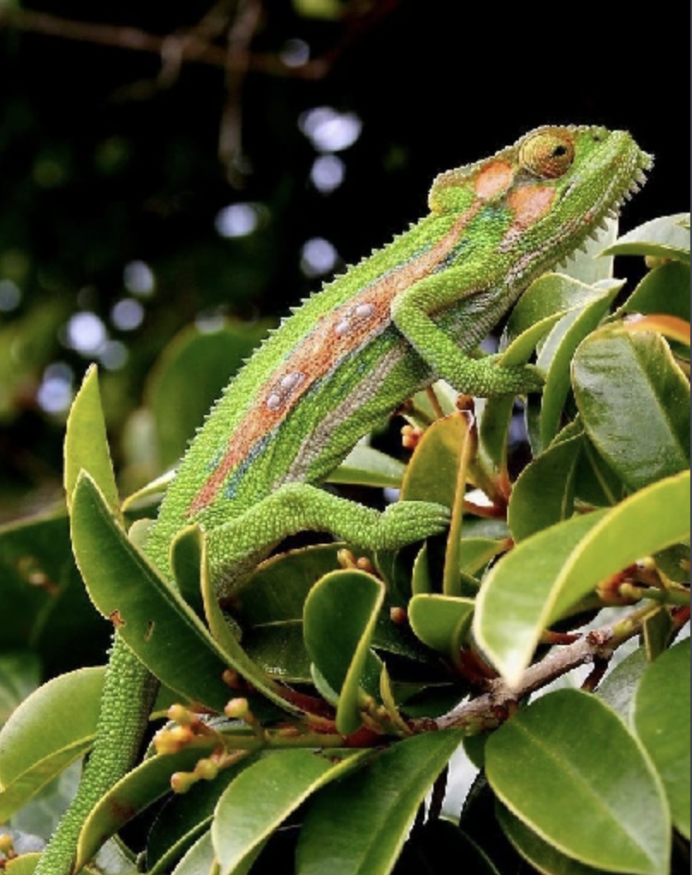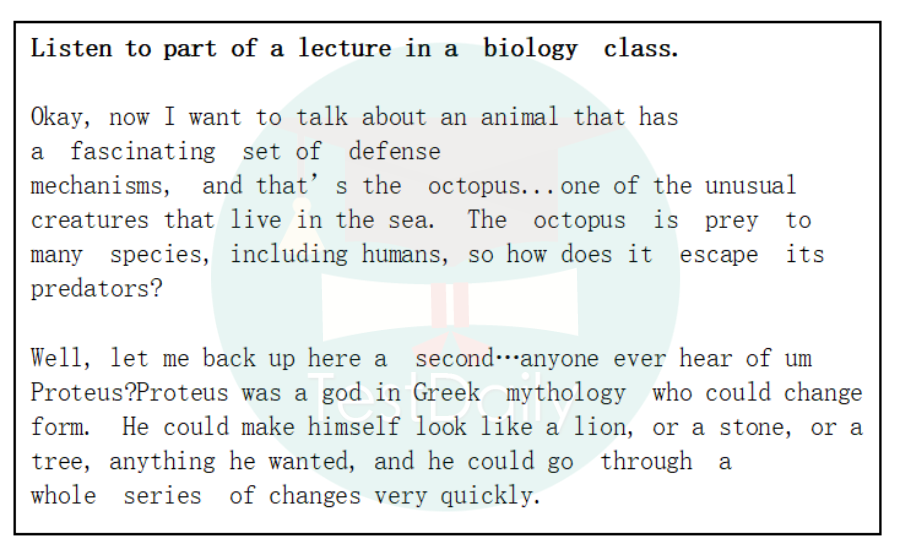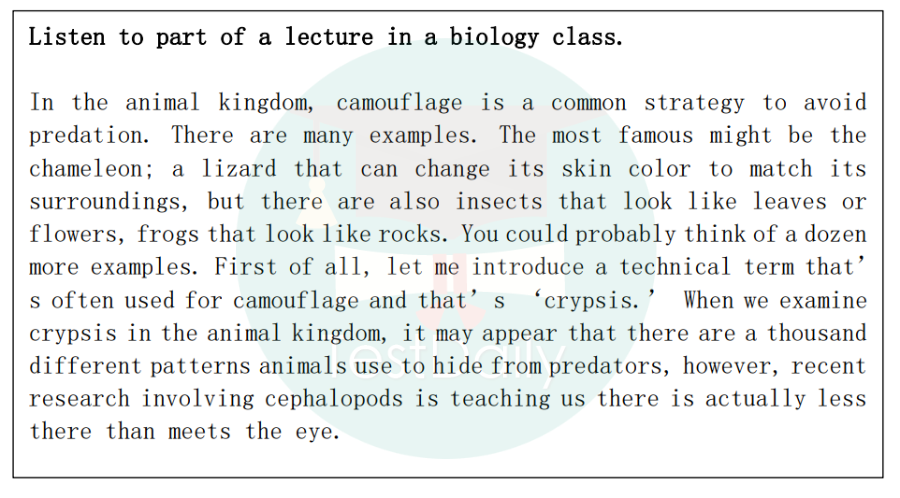一、动物学托福听力背景知识
As we all know, 人类的行为受环境的影响以及制约,动物也一样。上述这些行为,实际可以被理解为是动物为了生存而适应环境,所作出的一些行为调整。 所以,在animal behavior这类话题中,对话也好,讲座也罢,同学们都要记得把握住一个原则,也就是这类文章的重点:某种动物由于面临着某种生存问题从而演变出了某种行为(文章中高频考点包括:动物该行为的具体表现及其优缺点)。 而在听力考试中,常见的生存问题则可以分为: 1. 环境恶劣(drought, volcano eruption, flood, etc) 2. 天敌predators 3. 资源短缺limited resources 现在,我们一起分析为了保证存活,动物们都是如何做的。二、迁徙及航行行为
定义:Animal navigation is the ability of many animals to find their way accurately without maps or instruments. Birds such as the Arctic tern, insects such as the monarch butterflyand fish such as the salmon regularly migrate thousands of miles to and from their breeding grounds, and many other species navigate effectively over shorter distances. 动物导航是许多动物在没有地图或仪器的情况下准确找到自己的方向的能力。北极燕鸥等鸟类、帝王蝶等昆虫和鲑鱼等鱼类定期往返繁殖地数千英里,许多其他物种在较短距离内有效航行。1. 水生动物的航行
在昏暗的深水区域,动物们通常都无法通过眼睛来识别方向。因此,他们获得了一种特殊的定位和航行能力——回声定位。

2. 飞行动物的航行
对于鸟类来说,飞行则大多是为了获取更多的食物资源、躲避天敌、寻找更适宜的栖息地。

三、防御行为
在有了充足的食物供给、适宜的栖息地保障后,动物们仍面临一个巨大的威胁——捕猎者(predator)。要想存活下来,动物必须要通过进化,掌握一些自我防御能力,以求自保。 托福考试中常见的四类动物防御行为如下:1. Camouflage
Camouflage is one form that allows the animal to blend in with its environment and to mask its identity. Cryptic coloration is important to the survival of many new-born and young animals, as it is often their main defense against being detected by predators. Some animals blend in so well with their environment that it is very difficult to identify them. For example, some insects and other animals can look like leaves; both in their visual appearance and their behavior. It is important to note that predators also use cryptic coloration to avoid detection by unsuspecting prey. 伪装是一种形式,使得动物融入其环境,并掩盖其身份。隐色对许多新生和幼小动物的生存非常重要,因为它通常是它们抵御捕食者发现的主要防御。有些动物很好地融入了环境,因此很难识别它们。例如,一些昆虫和其他动物可以看起来像树叶;无论是在他们的视觉外观和他们的行为。值得注意的是,捕食者也使用神秘的颜色来避免被毫无戒心的猎物发现。
[caption id="" align="aligncenter" width="692"] 变色龙的伪装行为[/caption]
变色龙的伪装行为[/caption]
相关题目:TPO17 L4 章鱼是如何进行自我防御的
 变色龙的伪装行为[/caption]
变色龙的伪装行为[/caption]

2. Trickery
Trickery can also be used as a formidable defense. False features that appear to be enormous eyes or appendages can serve to dissuade potential predators. Mimicking an animal that is dangerous to a predator is another effective means of avoiding being eaten. For example, some harmless snakes have bright warning colors that resemble the colors of dangerously venomous snakes. Warning calls can also be used by one animal species to trick another animal species. 欺骗也可以作为一种强大的防御手段。看似巨大的眼睛或附属物的虚假特征可以用来劝阻潜在的捕食者。模仿对捕食者有危险的动物是避免被吃掉的另一种有效方法。例如,一些无害的蛇有明亮的警告颜色,类似于危险毒蛇的颜色。一种动物也可以用叫声警告欺骗另一种动物。3. Chemical Features
Chemical features can be just as effective at deterring predators. We all know the hazards of scaring a skunk! The chemicals released result in a not so pleasant aroma that an attacker will never forget. The dart frog also uses chemicals (poisons secreted from its skin) to deter attackers. Any animals that eat these small frogs are likely to get very sick or die. 化学特征在阻止捕食者方面同样有效。我们都知道吓唬臭鼬的危险!释放出来的化学物质会产生一种让天敌反感的气味。飞镖蛙还使用化学物质(皮肤分泌的毒素)来阻止攻击者。任何吃这些小青蛙的动物都有可能生病或死亡。4. Warning Calls
Some animals sound the alarm when danger approaches. For example, oxpeckers (birds that live in mutualistic relationships with grazing animals) will give a loud warning call when predators get too close. African elephants emit a rumbling alarm call when they hear the sound of African bees. Animals can also give distinctive calls to identify the type of threat. For instance, monkeys have one alarm sound for leopards and a different sound for eagles. 一些动物在危险来临时发出警报。例如,当捕食者离得太近时,啄牛鸟(与放牧动物生活在互惠关系中的鸟类)会发出响亮的警告声。非洲象听到非洲蜜蜂的声音时发出隆隆的警报声。动物也能发出独特的叫声来识别威胁的类型。例如,猴子对豹子有一种报警声,而对鹰有一种不同的报警声。 相关题目:20141221 L3 动物如何通过伪装来躲避捕食者
TD福利 & 领取方式
生物类话题一直都是托福听力考试中的常见话题,其中涉及到的考点和知识背景也需要同学们重点记忆,并且提高对相应话题对熟练度和敏锐度。通过上文,各位大概也已经了解了biology的常见话题,但我们依旧需要配合相应的题目,进行练习加强。 本次,笔者也为同学们准备了一份生物话题练习资料——《动物的航行及防御行为》这份资料。
[caption id="" align="aligncenter" width="621"] 《动物的航行及防御行为》资料片段展示[/caption]
《动物的航行及防御行为》资料片段展示[/caption]
该资料中包含了听力lecture中常见的动物行为出题套路,并附赠对应话题的真题和题目分析。真题难得,解析更难得,有需要的同学请扫描下方二维码,添加小马甲的微信并发送暗号【动物行为】获取哦!
 《动物的航行及防御行为》资料片段展示[/caption]
《动物的航行及防御行为》资料片段展示[/caption]

本文作者

推荐阅读
?托福听力态度题怎么解题?2个预判方法带你提前锁定答案部分,提高正确率! ?托福写作例证技巧-2大常见的例证写作问题,纠正后托福写作立马提分! ?托福阅读作者目的题常见考法及解题技巧分享-托福阅读破题方法 ?托福TPO72 全套题目及听力音频免费下载领取!-托福TPO72备考资料 ?托福听力背景知识之印象主义(impressionism)常见考点及出题套路- 托福派 微信号:gh_b94e5403208d
- *侵权请邮件联系563067852@qq.com,安排删除。













